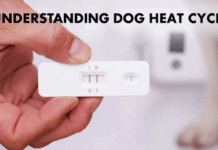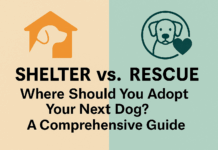Last Updated on July 26, 2024 by Dogs Vets
日本の犬の飼い方には長い歴史と多くの変遷があります。古来からの伝統的な方法から現代のより都市型でペット意識の高い飼い方まで、日本独自の文化的要素が見て取れます。この記事では、そんな日本の犬の飼い方の歴史的な流れをたどりつつ、時代とともにどのようにその方法や捉え方が変わってきたかを観察していきます。犬を飼うという行為が、単なる家族の一員としてだけでなく、社会的な意味を持つようになった背景にも触れて参ります。また、この様々な情報を網羅することで、現代の犬の飼い方にどの程度影響を与えているかも考察します。もしかしたら、この記事を読むことで、あなた自身の犬の飼い方に新たな視点をもたらすことができるかもしれません。さらに深く話題を理解するために、英会話 レッスンも活用することで、グローバルな視野から日本の犬の飼い方を考えることも可能になります。AmazingTalkerでは、オンライン英会話レッスンを提供していますので、ご自宅からでも世界の情報を得ることができます。一緒に歴史の旅に出発しましょう。
日本の犬の飼い方の歴史と靴及び足の清潔の重要性について
日本には古来より犬を大切な家族の一員として飼う習慣がありました。特に狩猟犬として使われることが多かった犬達は、その忠誠心と独自のスキルで人々の生活を支えてきました。犬の忠誠心は、日本の文化や信仰に深い影響を及ぼしました。例えば、有名な秋田犬のハチ公は主人の帰りをひたすら待ち続け、その忠誠心から日本中で愛される存在となりました。
また、日本では靴や足の清潔さも非常に重要視されてきました。これは、昔から日本家屋の中では畳の上を素足で歩く習慣があるためです。畳はデリケートな素材であり、外からの汚れを運び込むと、畳が傷んだりカビが生える原因となります。したがって、日本では家の中に入る前に靴を脱ぎ、足を清潔にすることが一般的です。また、文化的にも、清潔さは礼儀としての重要な役割を果たし、相手を尊重する意味合いも含まれています。
これらの習慣や文化は、日本人の行動や思考に深く影響を与えています。それらを理解することで、日本の文化や人々の行動について深く理解することが可能になります。
犬の飼い方が変わった背景
近年、犬の飼い方には大きな変化が見られます。それは戦後の繁栄、西洋化、出生率の低下などが影響を与えています。早い話が、それらの要素が我々の生活様式を変え、結果的に犬の飼い方も変わってきたのです。
戦後の繁栄
戦後の繁栄は、人々が豊かになり、ペットを飼う余裕ができたことを意味します。以前はほとんどの家庭で犬は実用的な動物として飼われていましたが、経済的な繁栄により、犬を家族の一員として愛する文化が広がりました。
西洋化
一方、西洋文化の影響も無視できません。西洋では古くから犬を家族として扱う文化があります。日本もその影響を受け、ペットとしての犬を受け入れ、愛情深く世話をする習慣が浸透しました。
出生率の低下
また、出生率の低下に伴って、犬は子供の代わりや、家族の一員として扱われる傾向が強まっています。子供が少ない家庭では、犬は一種の癒しや楽しみを提供し、家族を繋げる存在となっています。
以上のような背景から、犬は単なる実用的な動物から、家庭で大切にされる存在へと位置づけが変化してきました。それぞれの家庭で、愛され、大切にされている犬たちとの共生の仕方が、これからもさらに進化し続けることでしょう。
日本の住宅構造の変化と室内での犬の飼育の受け入れ
日本の住宅状況が変化し、その結果、室内での犬の飼育が広く受け入れられるようになったことについて説明します。そもそも、日本の家は伝統的な畳の部屋が主流でした。畳は、清潔さを保つためには定期的な手入れが必要で、ペットの飼育には不向きでした。例えば、犬が畳を噛んだり、爪で引っかかせたりすると、簡単に破れてしまいます。
- 畳の部屋から洋室への変化
しかし、近年では、マンションや一戸建ての家庭で洋室が主流となり、日本の住宅状況も変化しています。洋室はカーペットやフローリングが主な床材で、これらはペットとの共生に合理的な選択となりました。洋室の床材は、犬の爪や噛み付きに対してより耐久性があり、また肉球にも優しかったのです。
- 室内犬の受け入れとその理由
この住宅環境の変化に伴い、日本人は室内で犬を飼う習慣を受け入れ始めました。それまでのペットと言えば、庭で飼われる犬が一般的で、室内での犬の飼育は一部の富裕層に限られていました。しかし、洋室の床材のおかげで、家族と一緒に室内で過ごす犬が増え、ペットとのより深いコミュニケーションが可能になりました。
以上が、日本の家の構造変化によって室内での犬の飼育が受け入れられるようになった経緯です。これにより、日本のペット文化は大きく進歩し、家族の一員として犬を迎え入れる家庭が増えました。
日本における現在の犬の飼い方
日本では、ペットとして犬を飼うことが非常に一般的であり、様々な製品やサービスが提供されています。特に、犬の足を家に入る前に拭くという習慣はまだ続いており、そのための専用のウェットティッシュやクリーナーも市場に溢れています。
- ペット用品:ハーネス、リード、おもちゃ、フード、トリートなど、日本のペットストアでは様々な犬用品が豊富に揃っています。
- 犬のためのサービス:犬のための専門的なサービスも人気があり、ペットシッターやペットホテル、トリミング、訓練学校などがあります。
- 足拭き:日本では、家に入る前に犬の足を拭くという習慣があるため、ペットストアやオンラインショッピングサイトでは専用のウェットティッシュや足拭きマットが販売されています。
このような習慣や製品を通じて、日本人は犬と一緒に生活する喜びと、飼い主としての責任をしっかりと果たしています。
AmazingTalkerで日本の文化と言語を学びましょう
日本の文化や言語について深く学びたいと思ったことはありませんか?AmazingTalkerはそれを可能にします。パーソナライズされた一対一の指導とカスタマイズされた教材を提供するAmazingTalkerは、日本の文化的ニュアンスを理解するのに役立つリソースです。
AmazingTalkerのメリット
- パーソナライズされた学習: AmazingTalkerのプラットフォーム上のチューターは、透明な資格と経験を持っています。これにより、学生は自分の予算、要件、スケジュールに基づいて教師を選ぶことができます。
- フレキシブルな授業オプション: AmazingTalkerは契約を必要としません。透明な価格設定と柔軟なレッスンオプションを提供します。
- コース内容の事前相談: クラスの前に教師とコース内容を話し合うことも可能です。25分間のトライアルレッスンも予約できます。
日本の文化と言語への深い理解
日本の文化は、言語だけではなく、その背景にある思考や価値観にも深く根ざしています。AmazingTalkerの教師たちは、あなたが日本の文化と言語をより深く理解するためのガイド役になります。AmazingTalkerは、英語、日本語、韓国語、スペイン語、フランス語、ドイツ語を含む48の異なる言語のオンラインコースを提供しています。
それでは、AmazingTalkerを利用して、日本の文化と言語についてのあなたの学びの旅を始めてみましょう。
日本の犬飼いの習慣の進化の重要性
この記事では、日本の犬飼いの習慣の進化について具体的に考察しました。古代から現代に至るまで、日本の犬と人間の関係は地域社会の一部を形成し、社会の規範や価値観を反映してきました。家族の一員として愛され、信頼される存在から守護神、さらには現代では社会的地位の象徴としての役割まで、犬たちは日本人の生活と深く結びついています。今日、犬たちはペットとしてだけでなく、犬種ごとの個性や歴史を尊重する文化が広がっています。これらの犬飼いの習慣を理解することは、日本の文化や伝統への洞察を深めるための重要な一歩と言えるでしょう。日本の犬飼いの習慣は変わり続けてきましたが、そのすべてが日本人の独特の価値観を表現しています。これらの習慣を通して、我々は自身の文化について学び、理解を深めることができます。

















